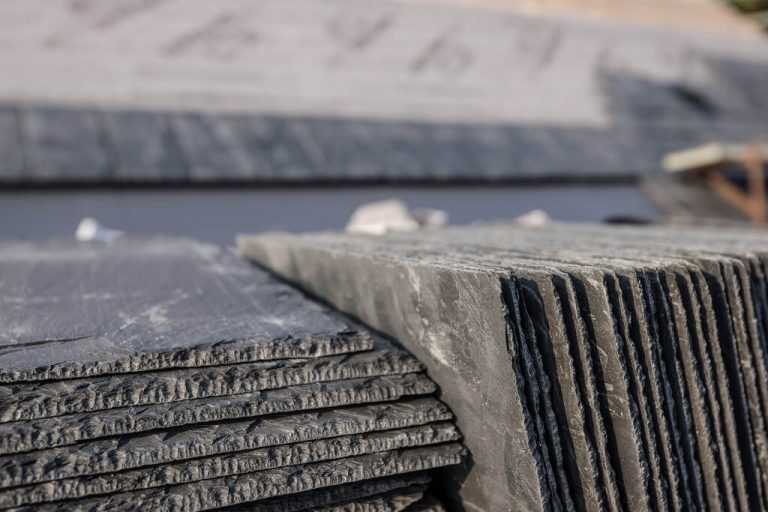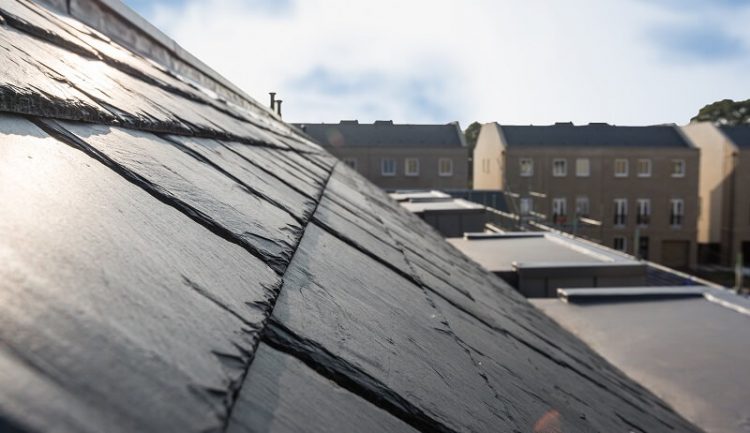A criterion of greater importance when choosing a roofing material is performance; a good quality slate is very durable and will out-perform better than other roofing materials
What makes a good roofing slate?
Slate is a fine-grained, low grade metamorphic rock, which can be split fairly thin, making it ideally suited as roofing material. It is formed from mud or silt deposited millions of years ago in calm water environments. As the sediments accumulated, the pressure and temperature of the lower layers increased and became compacted, until they were eventually consolidated into mudrock.

- These rocks retain the primary bedding layers, and, if they are thick enough, they can be used for roofing. Caithness flagstone is an example of this.
- The composition of mudrock varies depending on the source of the original mud, but the most common minerals are quartz, feldspar and clay minerals.
- Mudrock may be found in any location, but slate is only found in mountainous areas, since it is a metamorphic rock which requires for its formation the intense geological forces associated with mountain building.
- During metamorphism, stable minerals such as quartz are flattened and stretched in response to the main stress. They also grow in size and become increasingly crystalline.
- At the same time, less stable clay minerals are gradually replaced by more stable mica and chlorite. They increase in size and crystallinity with increasing metamorphism.

- All roofing slates have fairly similar composition, consisting primarily of quartz, chlorite and white mica, yet they do not all perform equally well on a roof. Some last hundreds of years while others fail after a few years of exposure.
- This is due to differences in the degree of metamorphism. In poorly metamorphosed slates, even the most stable mineral, quartz, if it is fine-grained, is vulnerable to weathering.
- Durability may be further compromised by the presence of certain deleterious minerals; clay minerals take up water and amorphous pyrite is prone to leaching and may react with other minerals present. At a higher metamorphic grade, quartz is usually coarser grained and more crystalline; the concentration of clay minerals is low and amorphous pyrite has often been replaced by crystalline cubes which are very resistant to weathering.
- Reliably predicting the durability of slate is only possible if a range of chemical and physical tests are carried
out. However, some good pointers are a gritty texture and a good ring tone when hit with a hammer, both of which indicate crystalline slate.
Joan Walsh BSc (Chem), BSc (Geol), PhD, FGS.
Consultant Geologist

